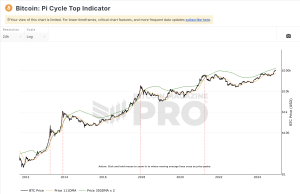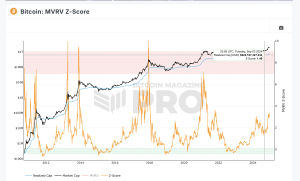The Rollercoaster Ride of Bitcoin: A Look into Its Major Crashes
Bitcoin’s journey has been nothing short of a rollercoaster, with its value experiencing meteoric rises followed by precipitous falls. This digital currency, born out of the desire for a decentralized monetary system, has both fascinated and bewildered investors around the globe. In this article, we delve into the major events that have led to significant downturns in Bitcoin’s price, showcasing the volatile nature of this cryptocurrency.

The Early Days and the First Major Crash
The story of Bitcoin’s price fluctuations begins in June 2011 when the cryptocurrency first experienced a significant crash. This was primarily due to a security breach at Mt. Gox, the largest Bitcoin exchange at the time. The hack led to a dramatic drop in Bitcoin’s value, marking one of the earliest indicators of the digital currency’s inherent volatility.
The Ponzi Scheme Revelation
August 2012 brought to light a Ponzi scheme within the Bitcoin community, which promised investors unrealistically high returns. The scheme managed to siphon off a substantial amount of Bitcoin, leading to a 56% crash in its price. This event underscored the susceptibility of the cryptocurrency market to scams and fraudulent schemes.
The Mt. Gox Saga Continues
April 2013 witnessed another major downturn in Bitcoin’s price due to issues with Mt. Gox once again. The exchange’s inability to handle the volume of transactions led to a temporary shutdown, which, coupled with a hack, caused Bitcoin’s price to plummet by 83%.
Regulatory Actions and Bans
One of the most significant drops in Bitcoin’s price occurred in December 2013 when China banned Bitcoin transactions. This decision by a major economy sent shockwaves through the cryptocurrency market, resulting in a 50% decrease in Bitcoin’s value overnight.
The Bubble Burst of 2017-2018
The year 2017 was monumental for Bitcoin, as its price soared to nearly $20,000. However, this rapid ascent was followed by a steep decline, with Bitcoin losing 84% of its value throughout 2018. This crash was attributed to a combination of factors, including regulatory scrutiny, security breaches in cryptocurrency exchanges, and the bursting of what many considered to be a speculative bubble.
The Pandemic Effect
The COVID-19 pandemic had a profound impact on financial markets globally, and Bitcoin was no exception. In March 2020, the cryptocurrency lost half of its value in just two days, highlighting the sensitivity of digital currencies to global economic shocks.
Environmental Concerns and Market Sentiments
May 2021 saw another significant dip in Bitcoin’s price by 53%, triggered by Elon Musk’s announcement that Tesla would no longer accept Bitcoin due to environmental concerns over its mining process. This was compounded by China’s renewed crackdown on cryptocurrency trading and mining, emphasizing the influence of market sentiments and regulatory policies on Bitcoin’s valuation.
Conclusion
The history of Bitcoin is a testament to the complexities and challenges of establishing a decentralized currency in a centralized world. Each crash, while detrimental at the moment, has contributed to the evolution of Bitcoin, making it more resilient and, in many ways, more accepted across the globe. Despite its volatility, Bitcoin continues to captivate investors, technologists, and visionaries, all of whom are keen to see how this cryptocurrency will shape the future of finance.
The tumultuous journey of Bitcoin underscores the importance of caution and due diligence for investors. As the cryptocurrency landscape continues to evolve, it remains to be seen how Bitcoin will adapt to the changing economic, regulatory, and technological environments. What is clear, however, is that the story of Bitcoin is far from over, with future chapters likely to be as compelling as those that have already unfolded.



